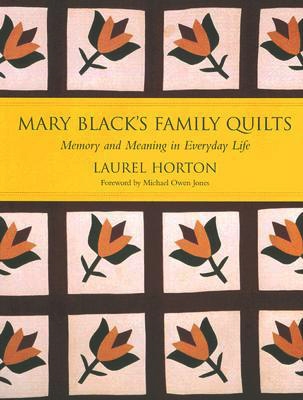A lavishly illustrated exploration of the material behavior and symbolic value of quilting across six generations
Mary Black's Family Quilts utilizes a remarkable collection of sixteen quilts to tell the story of a family through six generations and access the material behavior associated with quiltmaking traditions. The daughter of a prominent farmer, Mary Louisa Snoddy Black (1860-1927) is remembered in the Spartanburg, South Carolina, region for the hospital named in her honor and for the philanthropic foundation that continues to support community health and wellness. Laurel Horton explores the even more tangible legacy Black left to her descendants—trunks full of quilts made by women of the family, each labeled with detailed information about its origin and significance. Pairing the information from the labels with research culled from interviews, letters, and public documents, Horton stitches together the family's history across the fabric of two centuries as she explores the roles of women as keepers of home, hearth, and history in nineteenth- and twentieth-century America.
Valuable both as artistic creations and as historical artifacts, the family quilts reflect decades of work, familial interactions, economic philosophy, and personal and communal values. Suggesting that quilts were exchanged as a mode of currency in an informal, female-centered economy, Horton uncovers the clues they hold about the people who made and used them in their daily lives.
From the whole-cloth quilt made by Black's great-grandmother around 1850 to examples from the early twentieth century, Horton traces changes in style, material, and functions of quilts. In doing so, she dispels popular misconceptions associated with these pieces of Americana, including the notion that the earliest examples were made out of necessity from salvaged materials. She shows instead that early quilts were finely crafted from expensive materials and prized more for their aesthetic merits and symbolic functions than for their assumed domestic use.
Mary Black's Family Quilts also includes a foreword by Michael Owen Jones, Professor of Culture and Performance, University of California, Los Angeles, and author of Craftsman of the Cumberlands: Tradition and Creativity.
Laurel Horton is an independent folklorist and internationally recognized textile scholar. A native of Kentucky, she holds an M.A. in folklore from the University of North Carolina at Chapel Hill. The former president of the American Quilt Study Group, she edited Uncoverings, AQSG's annual volume of research papers from 1987 to 1993. Horton directed the South Carolina Quilt Project for the University of South Carolina's McKissick Museum from 1983 to 1985 and has published more than thirty articles on quiltmaking traditions. She lives in Seneca, South Carolina.
"Mary Black's Family Quilts represents an intriguing blend of South Carolina history, social history, material culture, and women's studies for academics and general readers alike. Laurel Horton's thorough research into the Black family history spans generations and her engaging narrative gives us an incredibly personal portrait of the ordinary women who made these delightful quilts.""—Jan Hiester, Curator of Textiles, Charleston Museum
